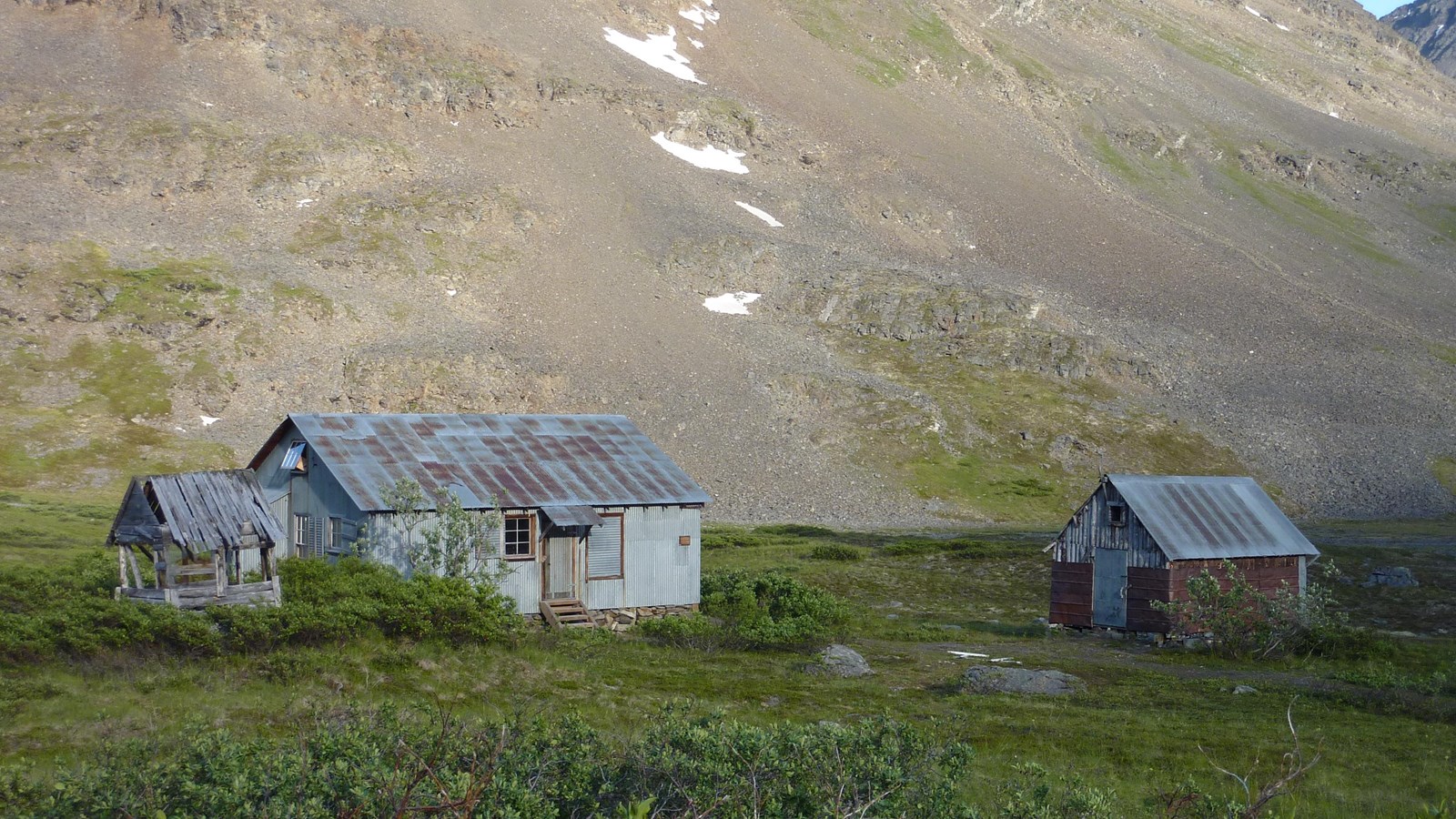Last updated: July 23, 2025
Place
Bremner Historic Mining District

NPS
Historical/Interpretive Information/Exhibits, Scenic View/Photo Spot, Shelter/Cabin, Trailhead, Water - Non-Potable
Bremner is a glacier, river and mining camp within Wrangell-St Elias National Park. It is named after John Bremner, who in 1884-1885 was the first non-native person to live in the area and who prospected for gold along the Bremner River. Located just to the north of the Bremner River, it was the scene of an important placer gold discovery in 1902 and played a key role in the history of the Copper River Basin. Only a few miners struck it rich, but the resulting demand for materials and supplies helped establish regional transportation networks, encouraged supporting industries, and hastened the exploration and settlement of the entire region. While small-scale placer mining continued for over forty years, lode development was largely confined to the period between 1934 and 1941, the district's most significant era. The Bremner Historic Mining District was added to the National Register of Historic Places in 2000. Bremner is extremely remote and can only be reached by airplane or long-range hiking. The closest road is about 70 miles away in McCarthy, Alaska. Currently, there are no residents, though there was a volunteer summer ranger in the past. There is a visitor's book to sign-in the bunkhouse. Other buildings include an old power generating station, a garage with an old Model T and a few other buildings. There is also a damaged stamp mill and higher up the mountain are additional remains at the actual mine sites. The Golconda Mining Company site, which contains a campsite, an elaborate ditch, and extensive piles of hand-stacked cobble, provides an example of an early placer mining system. The Goldconda complex includes two airstrips dating to the 1930s. The Yellow Band mining camp is one of the region's most complete, not only containing the typical housing and office facilities, but a sophisticated hydroelectric system. This camp is also significant for its association with Asa C. Baldwin, a distinguished regional explorer, surveyor, and mining engineer. While working for the U.S. Geodetic Survey, Baldwin completed the first American marine survey of Kodiak and the Aleutian Islands in 1909. From 1910-13, he served as a field officer with the U.S.-Canadian International Boundary Survey. Over the years, Baldwin worked locally as a consulting engineer, where, among other activities, he advised the Kennecott Copper Company and the Copper River and Northwestern Railway. Baldwin began prospecting in the Bremner District in the early 1930s, and from 1936 to 1940, was president of the Yellow Band Mining Company. He acquired the Bremner Gold Mining Company holdings in 1939.Lucky Girl, Grand Prize, Sheriff, and Yellow Band Mines are examples of remote underground mining operations. With each containing a variety of buildings and structures. While Lucky Girl mill is now ruinous due to repeated avalanche strikes, its operating machinery remains intact.The Bremner Historic Mining District embodies its period of twentieth-century mining, illustrating both its mining process and its evolutionary sequence. Unusually complete, it retains virtually all of its historic components, including an important placer site, a camp, four discrete lode mines, a mill, and an associated transportation network. This mining camp is extremely remote and in a very rugged wilderness area. Access is available via one of the air flight services in the area.
Latitude: 61.02916717529297 Longitude: -143.4388885498047
